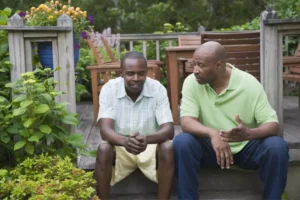During my junior year at the University of Southern Mississippi, I invited a Yugoslavian student to a campus worship service that was organized by my church, which was predominately white. After the meeting, we were talking in the hallway, and he noticed a group of mostly black students meeting across the hallway. Then he asked something that caught me off guard.
“Why do the white Christians and the black Christians meet separately?”
It was a fair question, but I didn’t know what to say. So I stumbled through an explanation about how “cultural differences” made it easier for blacks and whites to have their own churches. He wasn’t convinced, and I wasn’t either. The strange thing was that I hadn’t even noticed it before.
Unlike schools, restaurants and theaters, most American churches continue to struggle with racial integration, and it’s not limited to the South. According to the Pew Center for Research, 80 percent of American churches are composed of a single ethnicity or racial group. But it doesn’t appear we’re too concerned about it. Christianity Today reports that 71 percent of evangelicals believe their church is diverse enough.
So it’s still the 1960s in most churches on Sunday morning as we continue to use separate facilities, staffs, resources and worship styles. We’re a spiritual family with many unresolved issues, particularly between white and black believers, and if we’re going to move forward, we’ve got to deal with how we got here.
Sins of the Past
I grew up with this idea that the Civil War wiped out slavery in the 19th century, and then the civil rights movement came along in the 1960s and finished off the job. All that was left to do was move on because all of that was eons ago. But eventually, it hit me: In the timeline of history, injustices against black Americans practically happened yesterday.
While we know much of what the church was guilty of in 1865, I’m ashamed to say it also failed a century later. The Gospel Coalition writer Justin Taylor recently interviewed four Christian historians about the way evangelical Christians in the South reacted to the Civil Rights Movement. Unfortunately, each of these historians described a white church that actively resisted efforts toward racial equality, remaining silent in the face of injustice. But even outside of white southern believers, there were plenty of evangelicals across the country who perpetuated the problem.
In 1963, Christianity Today — now a leading voice for racial reconciliation — denounced the March on Washington as a “mob spectacle” and applauded segregationists. And the National Association of Evangelicals rebuffed Dr. King and explicitly declined to support black southerners who were being persecuted. In 1965, the association released a statement that it had “a policy of not becoming involved in political or sociological affairs that do not affect the function of the church or those involved in the propagation of the gospel.”
When white evangelicals muffled the cries of their black brothers and sisters in the 50s and 60s, it didn’t just reopen the old wounds of slavery — it inflicted new ones. And if we as believers continue to segregate decades later, we voluntarily tear ourselves apart and allow Satan to use us as weapons against each other. While this is no one’s goal, it’s unclear what we can do to “resist the devil” and fight for our family’s unity. We need not despair, however. Jesus has already started fighting this battle.
Family Reunions
Before Christ’s death He prayed for our unity so the world would believe in Him (John 17:20-21), and that prayer is going to get answered, one way or another. The only question is whether we’ll be part of the solution. Seeking after unity is going to take more than noticing we have a segregation problem; we’re going to have to actually do something about it, which won’t come naturally after decades of separation. The most obvious place to begin striving towards reconciliation is in our local churches.
Many churches attempt to bridge the racial divide by having joint services with other churches, which is a powerful statement of intention. But in my experience, these services don’t tend to yield long-term effects because there’s typically not a lot of interaction at a bi-annual event where everyone’s sitting and facing forward most of the time. We need to take it a step further.
Churches can jointly host topical affinity groups around interests like finances, parenting, sports or Bible study. Churches can also join together to do retreats that involve both corporate worship and breakout groups in which people can learn and pray together. And even if a church may not be open to these suggestions, we can still meet together at the same place Jesus did much of His ministry: the table.
Family Dinner
Pastor Barry Jones notes that in Scripture, the table is not merely a place for sustenance; it’s a place where “we get a little foretaste of the shalom of God.” From the Passover meal to the Lord’s Supper and the marriage feast of the Lamb, God uses food to bring His people together to celebrate freedom, remember Christ’s death and worship the resurrected Lamb (Exodus 12:1-20; Luke 22:14-19). Scripture also recounts one particularly poignant example of Jesus using food to restore His broken relationship with Peter. As Jones points out, rather than begin by confronting Peter about His betrayal, Jesus simply said, “Come and eat breakfast.”
Think about the friendly white woman who often references her faith during your conversations at work — invite her to join you for lunch. Or what about that black family down the street who’s always dressed up and heading to church on Sunday morning? Go introduce yourself and invite them over for dinner.
Make an effort to talk to the handful of black people at your church, get the phone number of that high school acquaintance who openly shared her faith, make friends with the one white guy who shows up to play in your church’s football league. Find people who will join you around the table, and don’t give up if the first couple of meals are awkward. Press forward, stay around that table, get to know them as a person, not as a black or white project, but as a sibling you didn’t grow up with, as a brother or sister who has the most important thing in common with you: the same heavenly Father.
Proposing a Toast
In relationships forged out of persistent engagement, prayer, worship, shared meals and fellowship, we will begin the process of being a part of Christ’s prayer for our unity, undoing the work of the devil and breaking down the walls that divide us. As many of our new relationships will begin with a meal, by the grace of God they find their culmination when we share Christ’s body and blood through communion, hopefully even in the same churches. In that space, we can truly feast in unity and experience a foretaste of our heavenly home where there will be “a great multitude that no one could number, from every nation, from all tribes and peoples and languages” (Revelation 7:9).
Our Father alone, through the power of His Spirit, can use us to bring His black and white children back together. This will happen as we gather around His Son, Jesus, the bridge-builder who is bigger than our racial identities, stronger than generational sin and eager to make His body whole.
Copyright 2016 Joshua Rogers. All rights reserved.











